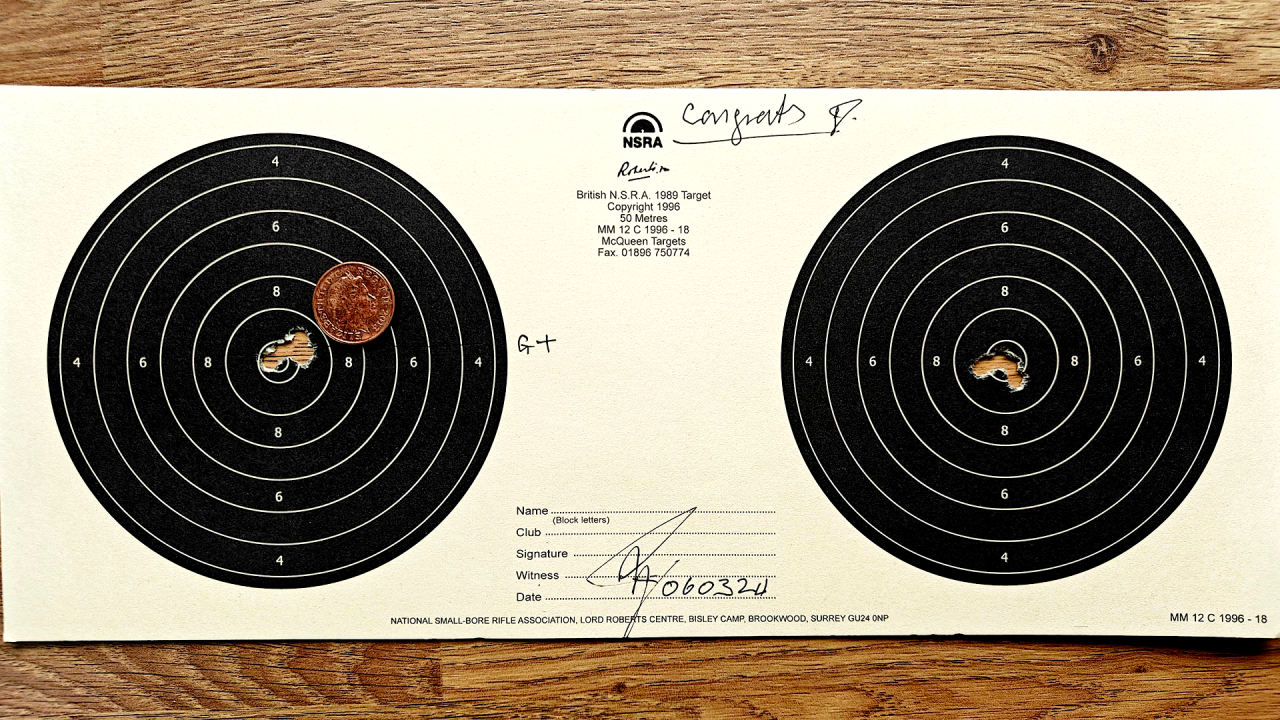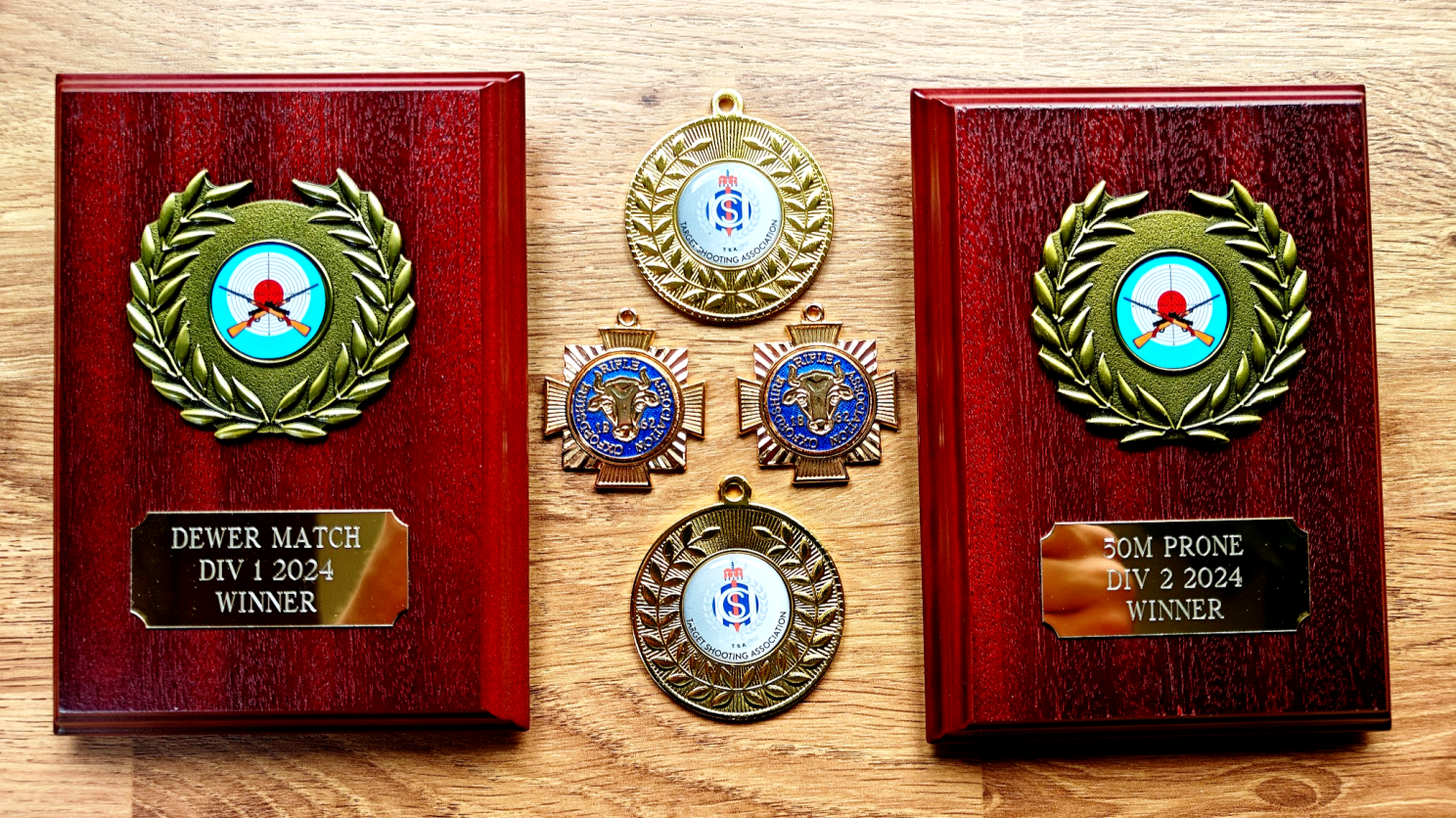
The Anatomy of the Perfect Shot Link to heading
- Load the round
- Align the rifle towards the target
- Remove the Safety, finger off trigger
- Gain your sight picture, ensure alignment
- Adjust body and breathing to naturally hold on target, check for wind
- Slow breathing and heart rate
- Finger on trigger, Check for Wind
- Start to squeeze trigger to first stage, Check for Wind
- Wait for shot between heartbeat, CHECK FOR WIND
- Final Squeeze…
- Shot Fires!
- Follow through - Wait for recoil to settle and analyse your finishing position
- Check result on target…
- Swear loudly due to unexpected gust of wind
Since moving out of the big smoke during Covid, I’ve had the opportunity to re-connect with one of my old hobbies: Target Shooting.
I hesitate to open with that because I know “guns” can trigger a strong mental image - but this is a sport of discipline. Specificly, Olympic Target Rifle. That said, I’d be lying if I claimed I didn’t enjoy other forms of shooting too.
As a child of a high-ranking military officer, I was introduced to firearms at a young age. I was lucky, sent to schools where I would become a Cadet and join and eventually captained a storied Shooting team with over a century of history located near one of the best shooting ranges in the world, Bisley. Privileged, even if I didn’t fully appreciate it at the time.
After being made redundant six months ago, I took some time to reset. I had ample time to train in my sport to a degree I have not had for 20 years. I’m happy to say, the opportunity for me to focus on shooting has reaped significant results, where I won each division and competition I took part in over the winter. Article content Golds in Civil Service, Bicester Rifle Club and Oxfordshire Competitions

Precision Under Pressure Link to heading
Shooting is a precise, repetitive craft. The goal? Place five shots in a group smaller than the size of a 1p coin - at 50 metres.
Every shot demands consideration of:
- Head & cheek position
- Eye alignment & strain
- Arm and grip pressure
- Breathing & heartbeat (because even your pulse can throw off your shot. Yes, really)
- Mirage, humidity, wind
- Trigger finger pressure
- Even barrel temperature…
…and dozens more tiny factors. A millimetre off here? Centimetres off downrange.
Where Project Management Comes In Link to heading
Training made me reflect on Agile. It’s not a perfect metaphor - but give me enough rope…
The human brain can hold onto approximately 4-5 pieces of active information at one time. There is no way that a shooter can calculate and consider all the above and more each time they squeeze the trigger. So how do we do it?
Shooters overcome this through repetition. Habits replace thought. Training embeds instinct. This allows us to focus on the 2-3 things we need to for this shot.
I find this maps surprisingly well to Agile adoption. When introducing process to a team, it often feels unnatural at first. “Why are we doing this?”, “We’ve got a flow already.” “Let’s not get bogged down in meetings.”
But we know frameworks like Scrum exist to support continuous improvement. Planning, Sprint Reviews, Retrospectives, these aren’t bureaucracy, they’re TRAINING. They’re our grouping drills. And they only work if we give them time to settle.
A Thousand repetitions Link to heading
I am an accomplished shot. In the last few months I’ve hit a plateau. In order to take myself my scores up to the next division, I need to enact some changes that will degrade my performance in the short term in the hope that once these changes are bedded in I will see another jump in consistency.
That means discomfort. Muscle resistance. Awkward posture. A dip in performance. But I trust the process: 1000 repetitions to embed a habit. Short-term pain, long-term gains. For me this sits firmly within the 80/20 rule, where the last 20% is taking 80% of the effort to achieve.
Same in teams. If you want to move from good to great, change is inevitable - but disruptive. So ask: is the timing right? Are you equipped to support the dip before the gain?
Budget, timelines and churn within a team are crucial considerations of a Producer when it comes to running their team. Increasing pressure to perform can have the opposite effect when developers get fed up and move on. Change costs. It must be justified. If not, you risk burnout, frustration, and eventually… churn.
Time and Training Link to heading
There’s a running joke in games: “We do Agile. By which we mean, we waterfall in sprints. With Jira.”
It’s becoming less of a joke.
Directors and devs alike are becoming skeptical of Agile. We’ve all read the think pieces: “Agile is Dead,” “Corporate Agile Doesn’t Work.”
And maybe they have a point. Games are even more a high-stakes business now. Hundreds of millions invested, studios shuttered, projects canceled. Investors chase trends. Leaders panic. Teams are pushed to pivot - again and again - without time to settle. New processes are abandoned if they don’t deliver immediate results.
It’s killing creativity. It’s stalling talent development. We don’t invest in skill growth we chase the metrics. We are emulating, instead of iterating.
We’re substituting the growth of our junior developers with Gen AI that can only learn and emulate from the hard work of people that have come before in an effort to move faster and cheaper…
The goal seems to be not to build a successful studio that will produce multiple hits in time, but to take a shortcut to success for the few, the casualties being all developer’s passion and mental wellness. Jerry McGuire rant over…
Don’t forget to Breath Link to heading
Sometimes you need to reset. You’ve been holding your breath too long, your heart rate has spiked and your vision has gone blurry. You can’t see your target clearly, if you send this shot, its chances of success are greatly reduced. You might get lucky, but chances are you won’t.
Come down off the trigger, close your eyes. Take some deep breaths whilst you envision the shot again.
Game development isn’t solo shooting, but the metaphor still works. I think of the team as the mechanics of the shot:
- Stakeholders, product managers and owners – define the target
- Scrum masters & support roles – form and structure
- Developers – apply controlled force to launch the shot
If any of those parts are misaligned, the result is off. No matter how hard everyone tries.
Takeaways Link to heading
🎯 Aim small Link to heading
Define your target. Ensure team alignment. “Delivering value” isn’t enough - give me Acceptance Criteria.
🛠️ Training, not practice Link to heading
Build habits, not hacks. Invest in your team’s growth, your future self will thank you.
🔄 Know when to change Link to heading
Chasing gains? Great. But be sure the team’s ready and the change is worth the inevitable disruption.
🧠 Follow through Link to heading
Reflect. Retrospect. Learn. Then improve the next shot.
🌬️ Winds of change Link to heading
Even if you commit no errors, you can still miss due to unexpected events. That is not weakness, that is life. (Thank you Jean Luc Picard)
🧘 Don’t forget to breathe Link to heading
Sometimes the right move is to pause. Kill technical debt, squash bugs. Reset. Find your sight picture again.